It is interesting that this blog on Classifying BDD Tools talks about TDD and ATDD. As Liz Keogh points out: BDD is about conversation and exploration. The easier it is for all involved guys to contribute, communicate intension, share ideas, understand the others, etc. the faster we get to an adequate solution and the better software we build. When we finally follow the tool path, what are the tools that support collaboration between stakeholders of software projects best?
Based on the this blog on the differences between TDD, BDD, and ATDD I would say that there are at least three different flavors of BDD tool:
- Unit Testing Frameworks
JUnit changed our view on development and testing. One of its strengths is that tests can be written in the same programming language as the application itself. Thus, we can build on the knowledge we already have in the delivery team. When the tests are even used to drive the development we reach the heaven of TDD.
Programming languages have been optimized to reduce redundancy, which is according to Ron Jeffries one of the worst sins of developers. Therefore, we often rely on these tools when we do technical testing to build the product right as they help us to be most efficient.
Several guys tried to make automated tests more understandable, as unit tests aren't really readable. One of the first attempts was to parse unit tests and provide a concise summary that is also readable to non-developers. For example TestDox / AgileDox creates simple documentation from the method names of JUnit test classes or Pickels generates documentation based on feature files written in Gherkin.
Frameworks such as MSpec help to write tests that are better readable and additionally provide readable output. These flavor of BDD tools focuses on human readable output, which enables the involvement of non-developers after the developers did their job.
- Scenario Testing Frameworks
To involve stakeholders earlier in the development cycle, new tools were created that focus more on readable input. Cucumber utilizes plain text files to provide human readable inputs for automated tests. The text files contain scenarios written in a specially structured language based on the given-when-then structure. These frameworks are great tools that support collaborative definition of acceptance criteria.
- Acceptance Testing Frameworks
In parallel to the BDD idea, another flavor of tools has been developed, where FIT was an early representative. This Framework for Integrated Test allows to specify examples within tables that are embedded into a documentation related to the examples. To write these documents no development skills are required and they can be easily read and reviewed by non technical guys as they are purely text based. Additionally, the text can be structured as the documents are not plain text files but the output of rich editors.
FitNesse allows to specify the expected behavior collaboratively based on a wiki. As wikis are easy to access and use, it has a low entry and learning curve, which propels the common work of the entire team. Many agile proponents emphasize that the best way for collaboration is face-to-face communication. But, if you write down what you have thought and discussed, it should be as rich and well structured as possible.
Concordion provides a lot of flexibility as you can describe your requirements in normal language using paragraphs, tables and proper punctuation. Any part of your description can be used as input to your automated tests and for the validation of the outputs of your system under test. As it is based on HTML you can structure your documents and integrate images. Simply, you have the expressiveness of the web to describe the expected behavior.
BDD should help to build the right product
You could implement BDD with all three flavors of tools, but each has its strengths and weaknesses. Unit testing frameworks and xSpec like tools perfectly use the strengths of programming. As they are tools from developers for developers, they are a perfect choice if you try to get the technical part right.
When you want to communicate the intention of the application you are probably better off with a tool that is strongly related with tools that editors use for their work. If a specification contains only inputs and expected outputs, anyone who reads it will have to reconstruct your ideas from the relation of inputs to expected outputs. A short description explaining the goal of a specification in the header helps the reader understand the structure of the specification. Documents based on specification-by-example could look like:


Yes, SpecFlow is cool, NSpec is cool ...
FitNesse and Concordion are cool as well

